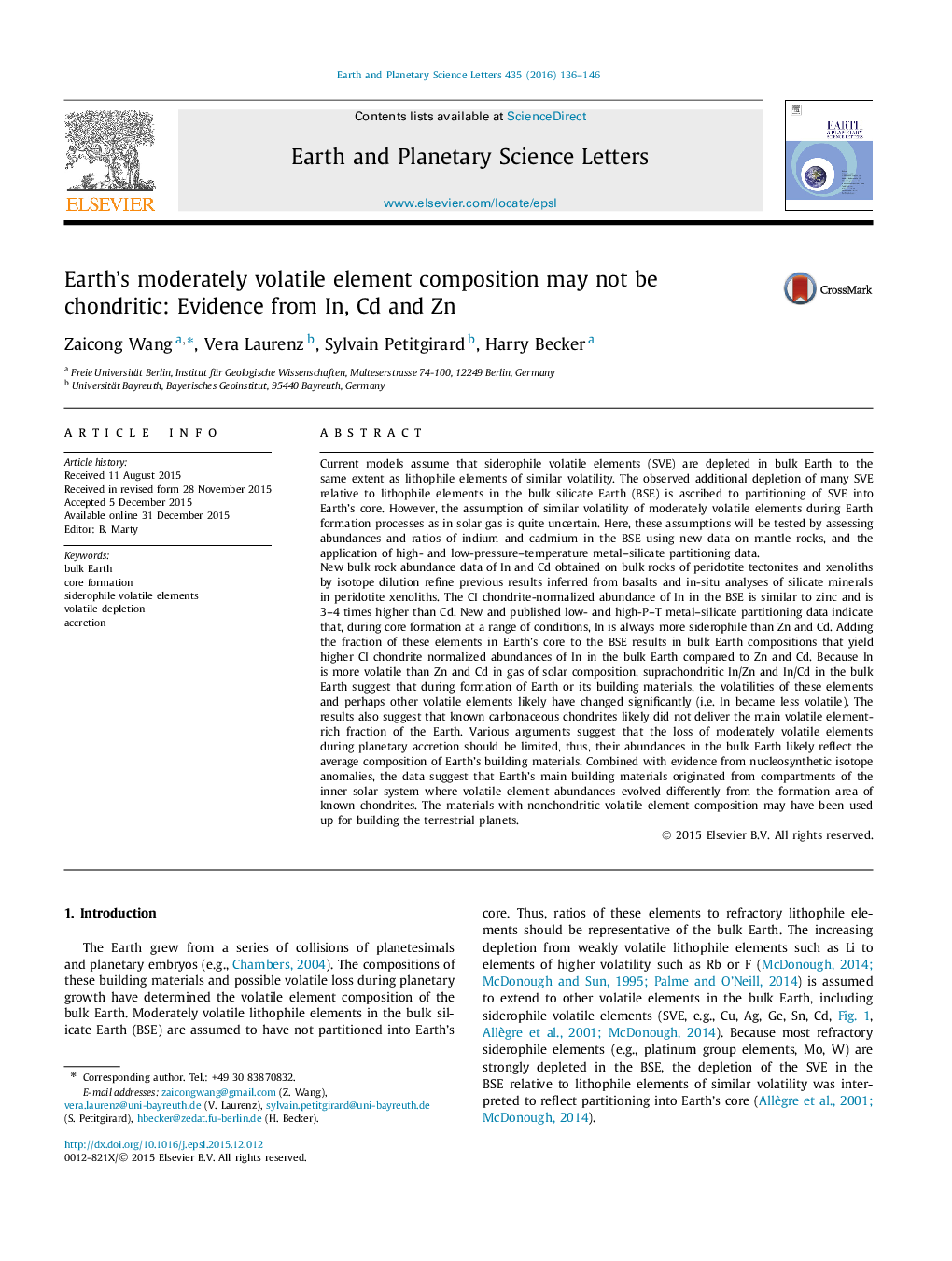| کد مقاله | کد نشریه | سال انتشار | مقاله انگلیسی | نسخه تمام متن |
|---|---|---|---|---|
| 6427653 | 1634721 | 2016 | 11 صفحه PDF | دانلود رایگان |

- New data support previous estimates on In and Cd abundances in bulk silicate Earth.
- At high P-T core formation conditions, In is more siderophile than Zn and Cd.
- Loss of In, Cd and Zn during accretion and giant impact is limited for Earth.
- Indium, Cd and Zn do not follow the assumed volatile depletion trend of the Earth.
- Earth's main building materials are now extinct and differ from known chondrites.
Current models assume that siderophile volatile elements (SVE) are depleted in bulk Earth to the same extent as lithophile elements of similar volatility. The observed additional depletion of many SVE relative to lithophile elements in the bulk silicate Earth (BSE) is ascribed to partitioning of SVE into Earth's core. However, the assumption of similar volatility of moderately volatile elements during Earth formation processes as in solar gas is quite uncertain. Here, these assumptions will be tested by assessing abundances and ratios of indium and cadmium in the BSE using new data on mantle rocks, and the application of high- and low-pressure-temperature metal-silicate partitioning data.New bulk rock abundance data of In and Cd obtained on bulk rocks of peridotite tectonites and xenoliths by isotope dilution refine previous results inferred from basalts and in-situ analyses of silicate minerals in peridotite xenoliths. The CI chondrite-normalized abundance of In in the BSE is similar to zinc and is 3-4 times higher than Cd. New and published low- and high-P-T metal-silicate partitioning data indicate that, during core formation at a range of conditions, In is always more siderophile than Zn and Cd. Adding the fraction of these elements in Earth's core to the BSE results in bulk Earth compositions that yield higher CI chondrite normalized abundances of In in the bulk Earth compared to Zn and Cd. Because In is more volatile than Zn and Cd in gas of solar composition, suprachondritic In/Zn and In/Cd in the bulk Earth suggest that during formation of Earth or its building materials, the volatilities of these elements and perhaps other volatile elements likely have changed significantly (i.e. In became less volatile). The results also suggest that known carbonaceous chondrites likely did not deliver the main volatile element-rich fraction of the Earth. Various arguments suggest that the loss of moderately volatile elements during planetary accretion should be limited, thus, their abundances in the bulk Earth likely reflect the average composition of Earth's building materials. Combined with evidence from nucleosynthetic isotope anomalies, the data suggest that Earth's main building materials originated from compartments of the inner solar system where volatile element abundances evolved differently from the formation area of known chondrites. The materials with nonchondritic volatile element composition may have been used up for building the terrestrial planets.
Journal: Earth and Planetary Science Letters - Volume 435, 1 February 2016, Pages 136-146